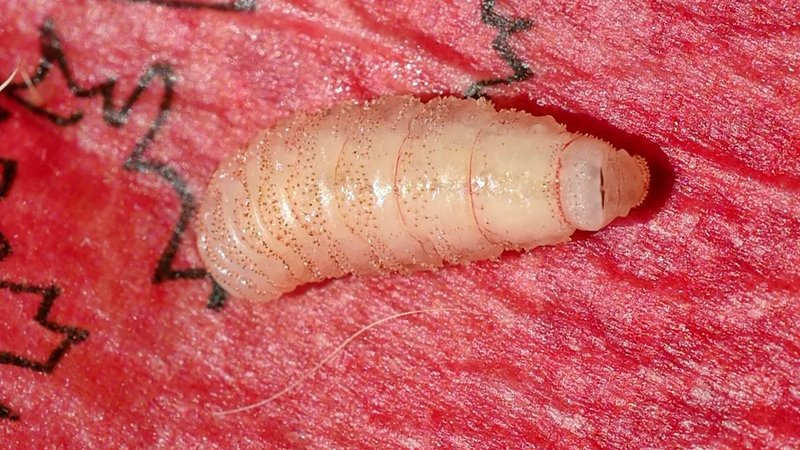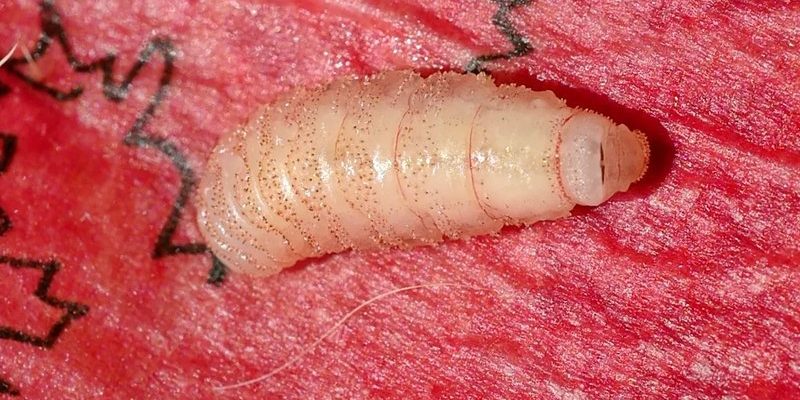
Botflies, particularly the ones belonging to the genus *Dermatobia*, are fascinating insects that have a unique life cycle, much of which takes place in the bodies of animals—yes, you heard that right! They’re like nature’s own mini science experiment, revealing how interconnected life is. Teaching about botfly larvae can ignite curiosity in students about ecosystems, parasitism, and the role of insects. So, let’s dig deeper into this subject, and I promise you’ll see these tiny creatures in a whole new light.
What Are Botfly Larvae?
First off, what exactly are these little critters? Botfly larvae are the immature stages of botflies, which are parasitic insects. The adult botfly looks somewhat like a large bumblebee and doesn’t actually lay its eggs directly on its host. Instead, it cleverly deposits its eggs on a mosquito or other biting insect. When that insect bites a host—often a mammal like a cow, horse, or even a human—the botfly larvae hatch and burrow into the host’s skin.
Once inside, these larvae can live for several weeks, feeding on the host’s tissues. This might sound a bit terrifying, but here’s a fun fact: botfly larvae have a fascinating way of breathing through a small hole in the host’s skin, which allows them to remain safe while they grow. This life cycle is a real-life example of how different species interact in nature, even in ways that might seem gross or unsettling.
Why Are Botfly Larvae Important?
You might be wondering, why should we care about botfly larvae? For starters, they play a crucial role in the ecosystem. As parasites, they help control populations of certain animals, which can be beneficial for maintaining balance in local ecosystems. Also, studying these larvae can give us valuable insights into parasitic infections, which helps us understand diseases that affect both animals and humans.
Moreover, botflies serve as a great teaching tool. They challenge us to think critically about life cycles and symbiotic relationships in nature. In classrooms, educators can use them to show students how life can thrive in unexpected ways and how even the creepiest creatures can have a purpose in the grand scheme of things.
How to Teach About Botfly Larvae
Teaching about botfly larvae can be both fun and engaging. Here are a few tips on how to introduce this topic in a classroom or informal setting:
- Visual Aids: Use videos or images to show the botfly life cycle. Seeing these creatures in action can spark interest and boost understanding.
- Hands-On Activities: Consider a dissection of common insects (with permission, of course). This gives students a first-hand look at parasitism in action.
- Group Discussions: Encourage students to share their thoughts on the role of parasites. Is it all negative? Could there be benefits? This promotes critical thinking.
Using these methods, you can help ignite a passion for wildlife education, making it both memorable and impactful for learners.
Common Misconceptions About Botfly Larvae
There are a lot of myths surrounding botfly larvae that can lead to misunderstandings. For instance, some people think that these larvae can jump from one host to another or that they are harmful to humans in all cases. In reality, while they can infect humans, it’s relatively rare and usually occurs when there’s close contact with areas where botflies are prevalent.
Another misconception is that all insects are dangerous to humans. While it’s true that some can transmit diseases, many insects, including botflies, have more complex stories. They’re just a part of a larger ecosystem filled with checks and balances. By teaching students about these misconceptions, you can help them develop a more well-rounded view of wildlife.
How to Handle Botfly Larvae Infections
If someone does find themselves with a botfly larvae infection, it’s essential to seek help from a healthcare professional. Trying to remove the larvae without proper knowledge can lead to infections or complications. Generally, doctors can remove the larvae safely through minor procedures, ensuring the person is cared for properly.
It’s also important to educate communities about preventing infections, especially in areas where botflies are common. Simple measures like using insect repellent, wearing protective clothing, and being mindful of known hotspots can significantly reduce the risk. Teaching these preventive measures not only helps individuals but contributes to overall public health.
Studying Botfly Larvae in the Classroom
Incorporating the study of botfly larvae into your wildlife education curriculum can be incredibly rewarding. Start with a clear lesson plan that includes objectives, necessary materials, and timeframes. You might focus on the lifecycle of the botfly, how it affects its host, and what lessons can be learned from its existence.
Consider using multimedia resources like documentaries or educational websites that feature botfly larvae. Students can engage with these materials through group projects or presentations, allowing them to explore the topic further and share their findings. By turning this lesson into an interactive experience, you ensure that students gain a deep understanding of these fascinating insects.
The Bigger Picture: Wildlife Education and Conservation
Ultimately, teaching about botfly larvae is about more than just the insects themselves. It connects to broader themes in wildlife education, like the importance of biodiversity and conservation. Every creature, even the less glamorous ones, plays a role in the ecosystem. By fostering a sense of curiosity and respect for all living things, we inspire the next generation to care about the world around them.
As we teach students about botfly larvae, we’re not just imparting knowledge—we’re nurturing responsible stewards of the environment. This approach encourages empathy, understanding, and a commitment to protecting wildlife and their habitats.
In conclusion, exploring the world of botfly larvae offers a unique opportunity to learn about life cycles, parasitism, and the interconnectedness of nature. By using engaging teaching methods and addressing common misconceptions, we can spark curiosity in our students and help them appreciate the wonders of wildlife. So next time you hear about botflies, remember there’s so much more to them than meets the eye!

